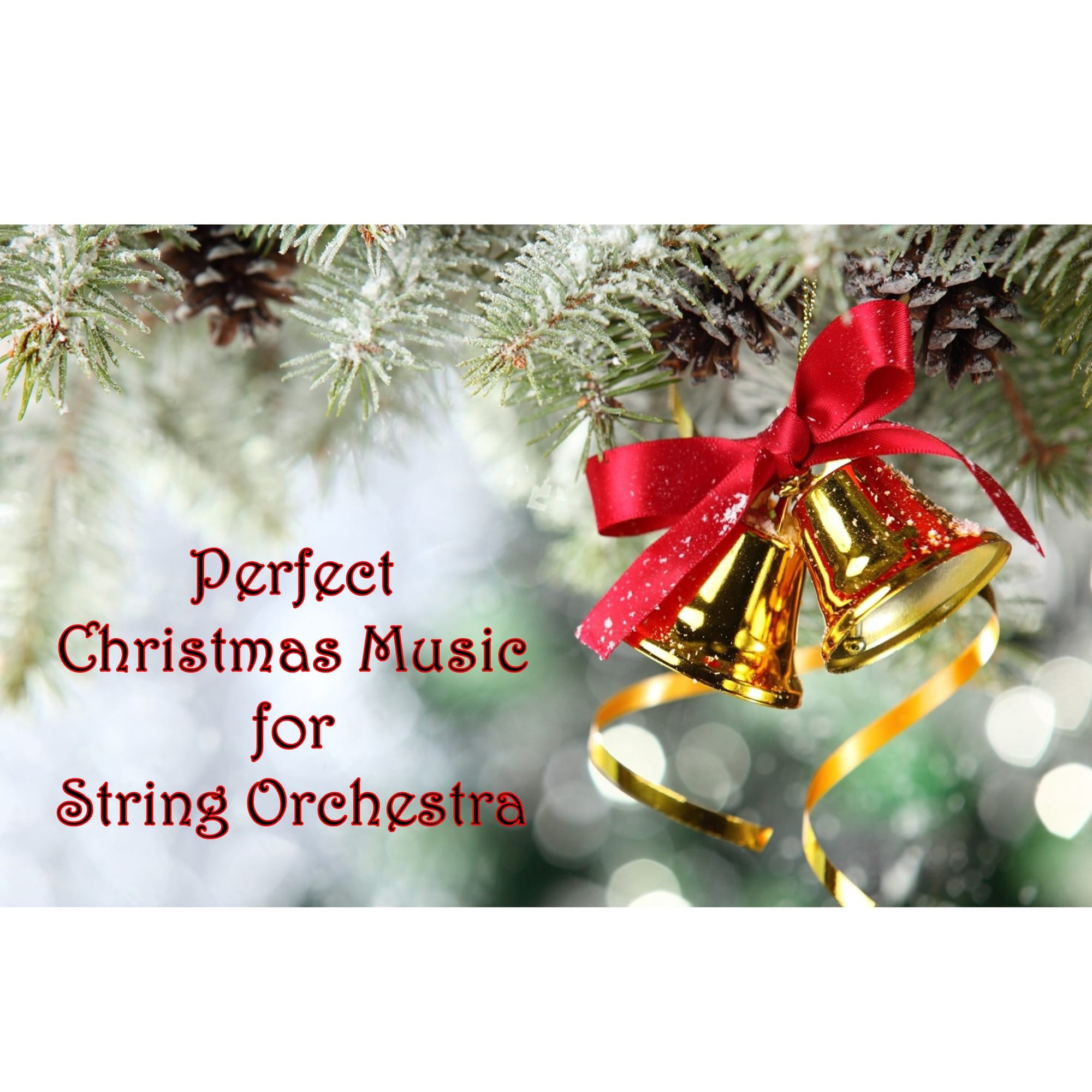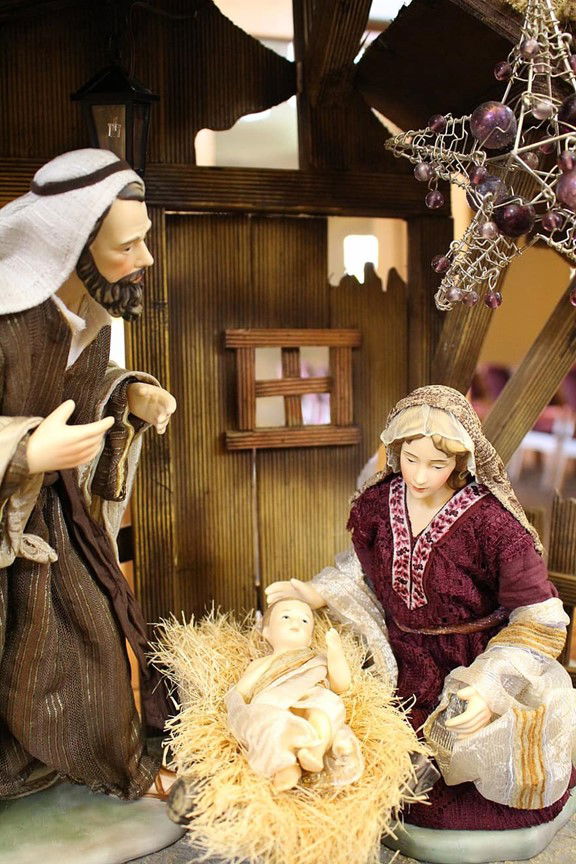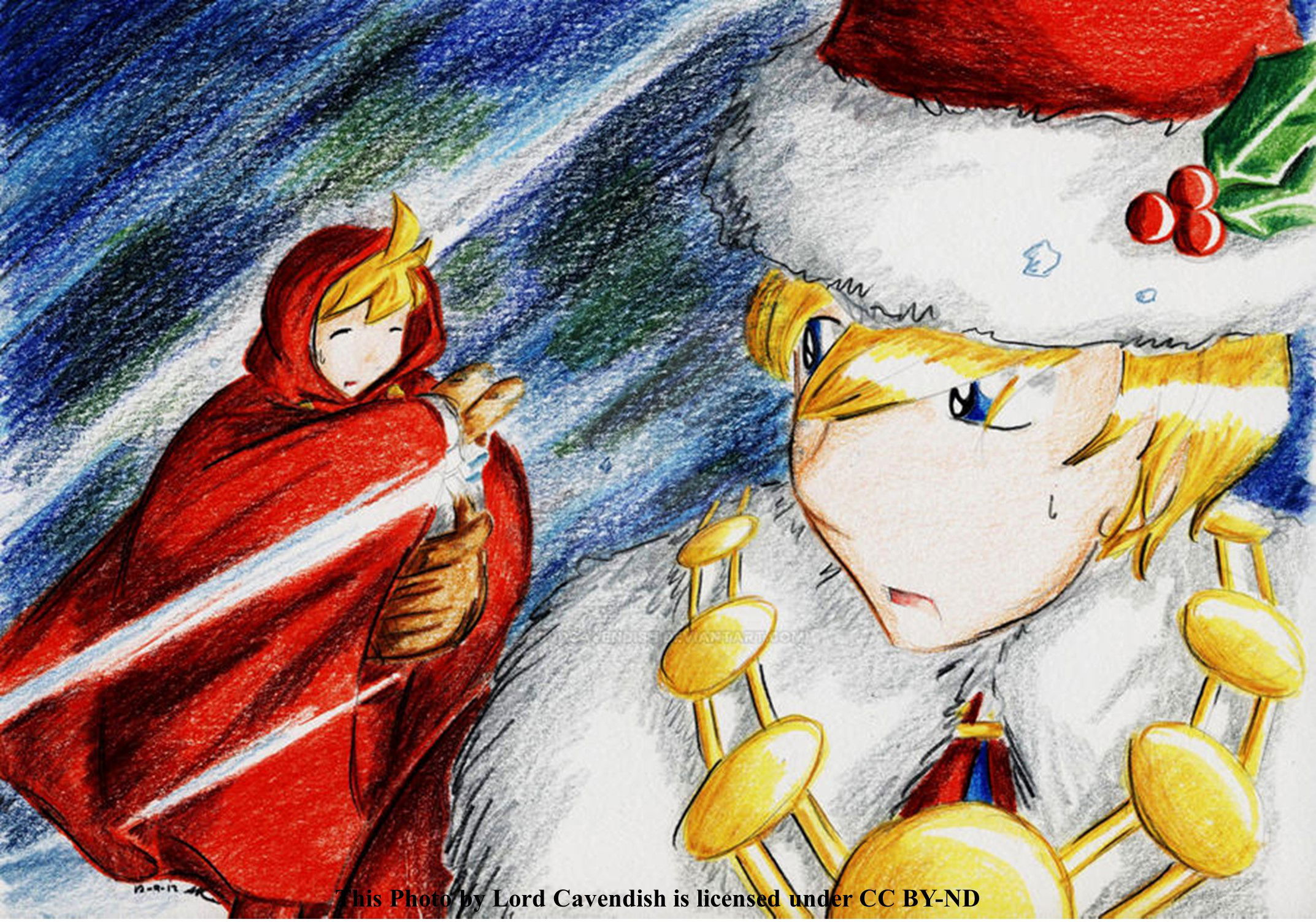How to Find the Perfect Christmas Music for a String Orchestra

FEATURED SONGS FOR THIS ARTICLE:
Silent Night (Song of Light) for String Orchestra
The Holly and the Ivy
Even though this seems a bit early to be thinking about Christmas, it’s time to think about what your String Orchestra will be rehearsing for the Christmas concert that will take place in a few months.
As the Christmas season approaches, String Orchestras around the world are tuning up and preparing to spread joy through the magic of music. Selecting the right Christmas music for your String Orchestra is a crucial task that sets the tone for your festive performances. To ensure that your concert is an all-round success, please examine this comprehensive guide on how to find the perfect Christmas music that suits your orchestra's abilities and the true spirit of the season.
First, you’ll have to UNDERSTAND YOUR STRING ORCHESTRA'S SKILL LEVEL
The first step in finding the ideal Christmas music is to understand your orchestra’s skill level. Consider the proficiency of your musicians, the instrumentation available, and the amount of time you have for rehearsals.
The orchestra you have this fall is virtually brand new. The seniors and some students that transferred out are gone; some of the skills and leadership that you counted on last year are no longer available. Unless you also deal with the “feeder” orchestras (the one form the elementary and middle schools), you have some unknown skills and talents that you will need to assess, maybe even before you purchase any Christmas music at all. With your best assessments in mind, keep these other factors in mind as well:
- Skill Level: You’ve been working on this. And, remember that while it's good to challenge your musicians, it's equally important to select music that they can master in the available time. It would be great if you had months to work on it like you do for the spring concert, but, unfortunately, you don’t.
- Instrumentation: Make sure the chosen piece matches the instruments you have in your orchestra. Some Christmas music is written specifically for certain instrumentations, so check for arrangements that fit your ensemble. Some things like a “whip snap” aren’t hard to get or even make. However, a good-sounding set of sleigh bells may be a little harder to get, unless you live in a place where they are used and a local family can lend you some.
- Divide Parts Wisely: If your orchestra has a mix of experienced and less-experienced players, consider selecting music that can be divided into sections with varying levels of complexity. This allows everyone to participate and contribute to the performance. Sometimes, parts can be divided between instruments. If you lack a baritone, sometimes a small group of trumpets can play the part, provided that it’s written in treble clef. Otherwise, a part written in bass clef can be played by a trombone or two.
There are a number of ways by which a string orchestra director can assess a player’s technical skills, tonal quality, and ability to meet the challenges of the music that will need to be played. Here are a couple ways that have also been used in choosing section leaders. The basic process is the same.
These assessments encompass technical proficiency, sight-reading abilities, and prepared repertoire to fairly evaluate each players skills. This approach ensures an impartial and transparent process in evaluating . For a truly objective evaluation, these should be conducted blindly. Here are the methods:

Obvious Evaluation – The first one is conducted in a way similar to the way a professional music ensemble would choose its players and leaders. This would work in both smaller and larger orchestras. It would also have to be performed in such a way as to foster healthy competition and recognition of accomplishment rather than encouraging the wrong kind of pride and reinforcing a shame culture.
- Each musician chooses a number, randomly drawn.
- Each one performs a prescribed set of pieces behind a screen so that the director can hear, but not see the candidate. The set of pieces should include a prepared piece chosen by the director, this one being the same for all players. It would include all of the technical skills that are being evaluated.
- Each musician would also perform a piece not seen before to test sight reading skills.
The conductor would have to set a range of performance criteria from which the evaluation can be constructed. The criteria range would have to be somewhat general because some of the criteria would be somewhat subjective. For example, what defines “good tone” from an instrument? And, what determines the ideal upper range for a particular instrument?
Covert Evaluation – The second one may prove a little more difficult but, in the end it may be better, especially in a smaller or less mature orchestra, to evaluate the players while lessening the danger of hurting the feelings of, or undermining the confidence of the musicians. In this one, the director is using a more covert method.
- During a regular rehearsal, the director asks to hear each section play a section of a well-rehearsed tune. The director can say that he or she is investigating something, which is the truth, and not to be bothered as he or she wanders around among them.
- While each section plays, the director does what was described and wanders among the players, listening, critiquing and making note, mentally or on paper.
- The same process can then be used with a piece that the band has never played before, perhaps one that the director is considering using. That way, the director can analyze the players’ sight reading skills and see if the piece is one that they might like to play.
Then, comes the fun part – EXPLORE THE WIDE VARIETY OF CHRISTMAS TUNES
Christmas music might be divided into three categories:
> Legitimate (music that celebrates the birth of Jesus),
> Music that celebrates the circumstances and environment of many Christmas traditions and celebrations (songs that deal with Santa Claus, good feelings, wishes for peace, snow, starry nights, etc.),
> Music that was used in a theatrical presentation of a story that happened at Christmas time (“The Nutcracker Suite” or any music from a Hallmark Christmas TV Show).

> Legitimate Christmas Music has a rich and timeless tradition, with a treasure trove of classic compositions. This might be a great time to explore the way that people around the world celebrate the arrival of the baby Jesus. There are a plethora of well-known pieces that you may already have. Here is a short list of some familiar and not-so-familiar tunes from different places on the globe that you can add to that repertoire:
- Germany - O du Fröhliche (Oh, How Joyful), a traditional carol written by Johannes Daniel Falk. Es ist ein Ros entsprungen (Lo, How a Rose E’er Blooming), first appearing in print in 1599.
- Italy - Tu Scendi Dalle Stelle, (You Come Down from the Stars), is a classic Italian Christmas carol written in the 1700s. Adeste Fidelis (O, Come All Ye faithful).
- France - Un flambeau, Jeannette, Isabelle (Bring a Torch, Jeanette, Isabella) French Provençal carol by Émile Blémont.
- Nigeria – Betelehemu (Bethlehem" in Yoruba)
- Russia - Na Rizdvo Khrystove (On the Nativity of Christ), a quick and upbeat carol that summarizes the nativity visitations.
- England, Ireland, Scotland, Wales – (I listed these separately because, at the time of the writing of the Christmas carols in these countries, there was no concept of a “United Kingdom”.) – The Holly and the Ivy, an 18th Century English folk tune. The Wexford Carol, a 12th century Irish carol.

> Circumstantial Christmas Music can add feelings of good will and peace to the lives of both the audience and the String Orchestra. Here is a short list of some from that category:
- Carol of the Bells, based on the Ukrainian New Year's song Shchedryk. music by the Ukrainian composer Mykola Leontovych; the English-language lyrics were written in 1936 by Peter Wilhousky .
- Sleigh Ride by Leroy Anderson. In the U.S., Christmas is often associated with snow and sleighs, probably because many Americans had their ancestry in western Europe. This lively piece is a holiday favorite with its jingling bells and cheerful melody.
- Let There Be Peace on Earth by Jill Jackson Miller and Sy Miller. Although not a truly Christian Christmas song, it does contain the truth that there can be peace on Earth, even though it doesn’t reference the fact that true peace only is only knowable from the one who was born at Christmas.
- Good King Wenceslas, words by John Mason Neale, the melody is a 13th-century tune called ‘Tempus adest floridum’. Although it’s a song celebrating the feast of Saint Stephen, not a Christmas carol, Stephen was know for exemplifying a noble Christian lifestyle.

> Theatrical Christmas Music
- The Nutcracker Suite by Tchaikovsky: This ballet score offers a range of festive and magical selections to suit your orchestra's preferences.
- You're a Mean One Mr. Grinch, by Albert Hague. A contrast song that could be played in combination with Welcome Christmas (otherwise known as Dahoo Dores) by Dr. Seuss himself.
REVIEW AVAILABLE ARRANGEMENTS Many Christmas pieces have multiple arrangements available, catering to different instrumentations and skill levels. Don't limit yourself to a single arrangement; instead, research various options and choose the one that best suits your orchestra. Consider the following:
- String Orchestra Arrangements: Look for arrangements specifically created for String Orchestras. These are tailored to the strengths and capabilities of your ensemble.
- Flexibility: Some arrangements offer flexibility in instrumentation, allowing you to adapt the piece to your orchestra's specific needs.
- Available Keys: Ensure that the arrangement is in a key that works well for your instruments. Transposing may be necessary to match the range of your players.
Don't hesitate to seek recommendations from fellow directors, musicians, or music educators. They can provide valuable insights into pieces that have worked well for their ensembles in the past. Online forums, social media groups, and music educator networks are great places to ask for suggestions and share experiences.
Before making your final selections, take advantage of resources that allow you to sample and listen to the music. Many sheet music retailers and websites offer audio previews of pieces, giving you a sense of how they sound. This is invaluable in assessing whether a particular composition aligns with your orchestra's style and the atmosphere you want to create.
Consider Licensing and Copyright
Ensure that you have the necessary licenses and permissions to perform the selected music. Copyright laws apply to all music, including Christmas tunes, so make sure you have the legal right to perform the pieces in public. Licensing agencies and music publishers can provide guidance on this matter.
When Planning the Concert Program, it might be a good idea to plan the music so as to move toward the real meaning of Christmas, even while including some of the more fun and peripheral kinds of music. A sample program might look like this:
- Joy to the World – perhaps a more contemporary arrangement.
- …Mr. Grinch and Welcome Christmas
- A selection of carols from around the world, even just two or three would do.
- Carol of the Bells
- Angels We Have heard on High
- Silent Night
You may have noticed that this article did not refer to the Christmas Concert as a Holiday Concert. The term Holiday Concert was first used so as to try to include everyone in the wide variety of celebrations that supposedly took place in the month of December. In reality, there is no viable catalog of music for Saturnalia or Kwanzaa. There are quite a few songs having to do with the celebration of Hannukah and, being part of Jewish-Christian history, are quite welcome at a Christmas concert. It seems that society has hijacked the Christmas holiday in order to have a feel-good holiday, while ignoring its true meaning. My sincerest encouragement is that you celebrate Christmas well, or not at all. To do so, I would suggest that you replace insincere, insipid music with no conviction with any number of pop tunes or other light fare and leave any holiday references out of the concert. Please do not hijack a Christian holy day for popular benefit.
Conclusion
Selecting the perfect Christmas music for your String Orchestra is a rewarding endeavor that sets the stage for a festive and memorable performance. By considering your orchestra's skill level, exploring classic and contemporary arrangements, and providing thematic variety, you can create a program that delights your audience and brings the joy of the holiday season to life through music. Remember to plan, practice, and infuse your performance with your ensemble's unique flair to make your Christmas concert truly special.
Salt Cellar Creations understands the way that a String Orchestra can share the joy of Christmas. We have a couple of arrangements available for your next Christmas concert. One is an ethereal arrangement of the Christmas classic, Silent Night, that we call Silent Night (Song of Light) for String Orchestra . It tries to capture the pondering that Mary did about everything that had happened to her. The other is a unique arrangement of The Holly and the Ivy. It captures the variations that a traditional folk song might embody, with three time signatures and a couple of simple key changes.
Find out more about what Salt Cellar Creations has to offer for String Orchestras HERE. Explore the available music HERE.
SCC can also compose an original piece for you or do a custom arrangement for you. There are two ways that this can be done; one is much more affordable than the other. And SCC is always looking for ideas of pieces to arrange or suggestions for original pieces.
We have sold music not only in the US but in Canada, the United Kingdom, France, Australia, New Zealand and Austria. Please visit the WEBSITE or CONTACT US to let us know what we can do for you.